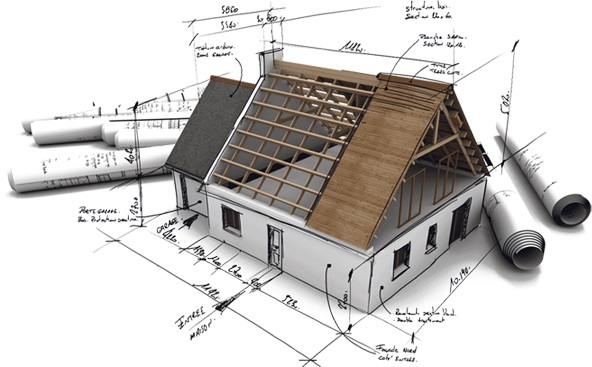Understanding the Construction Drawings and Permit Process
If you're thinking of a Basement Drawing and construction Mississauga project for your house, you might be wondering where to start. It is essential to be aware of the local regulations and By-laws that regulate the process, provided that your proposed project is in line with specific requirements. Following Toronto's City of Brampton, you must obtain approval for the building if you intend to:
In addition, Pent-Haus on Zoning and regulations issued by and regulations from the Conservation Authority will also hold control. In essence, any construction project that goes beyond superficial adjustments requires approval from the Construction drawing Brampton.
If your project falls within the required criteria, it's essential to understand you must be aware that Building Department cannot issue any permits without the submission of Construction Drawings. Construction drawings are a sized sketch of the project on paper, which demonstrates the steps to be taken, and how it will be carried out and how compliance with the local building code can be met.
Along with your completed application form, it is required that you be required to submit the following documents/drawings in two copies and on the. In certain instances, additional drawings and information could be required. All submissions must comply with these Electronic Submission Guidelines.
Grading Plan
An enlarged Lot Grading Plan prepared by an expert in grading must be submitted with all new homes which are not subject to an agreement for subdivision or approval for a site plan.
Areas with landscaping
For new Building drawing company Mississauga and additions, as well as existing and proposed completed grades and the finished first-floor elevations. The layout of the basement, usage as well as the size of the rooms as well as spaces. Dimensions and thickness of foundations constructed of concrete or masonry walls and footings.
Floor Plans
Floor plans are top views of a structure as if cut horizontally, just above floor lines. Floor plans should show the interior design of the level that is being discussed, as well as structural framing details for the floor that is above it, as well as being able to.
Size, layout, and use of spaces and rooms. Type, size, grade spacing and the location of structural members such as beams, columns and Joists. Roof framing should indicate the dimension, grade, as well as spacing between rafters as well as roof joists. Information about the details of masonry fireplace(s) - make model, model, and the approval body for fireplaces built by factories.
Exterior Elevations
The elevations show the view from the outside of every side of a structure. Every elevation can be identified using the Direction they are facing. You should give a sufficient number of elevations to define the project accurately.
Cross-sections
The cross-sections depict houses along an imagined vertical cut that cuts through a particular structure area. They show various components of a building concealed in floors, walls and ceilings. Multiple cross-sections are needed at different locations to meet the needs of permit requests.
The size and the nature of foundations and footings. Distance from grade to basement floor the underside of footing. Dry proofing, Vapor Barrier waterproofing, and drainage layers. Roof, floor and walls, both interior and exterior construction. Details, location, and rating of fire separations. Insulation, R-Values, for basements, floors, walls and roof assemblies. The height of the attic and crawl space Access, ventilation, and height
Detail drawings illustrating information about specific locations, connections, and construction methods may be needed. Always refer to the drawings of elevations, plans, and sections.
Attached Garages
Effective exhaust fumes and gas barriers between the occupied unit and garage. The door between the garage and unit has to be weather-stripped, fitted with a self-closing mechanism and is not to be situated in a space intended to be used for sleeping. Every window in an area that separates the unit from a garage attached to it should be adequately sealed.
The addition of a storey. The dimensions, grades, and species of all beams and joists currently in use. The size and position of the columns, posts and their foundations.
The thickness and size of the foundations made of concrete or masonry footings and walls. The size and position of load-bearing studs within existing bearing walls, as well as the dimensions and thickness of the footings used for these walls. Main floor plans showing what the floor above will support. A cross-section that indicates how the load is to be transferred from the foundation
Grades
If your plan alters an existing grade, you could need to file additional plans for the site showing current and future grades.
It is crucial to remember that Building drawing company Brampton are necessary before you can obtain accurate bids on the job. The drawings will outline the details needed to estimate the amount associated with the work. Many homeowners fail to take this vital aspect, so be sure you are on the right path towards success with your project by taking the first step towards the correct Direction.


.jpg)
Comments
Post a Comment